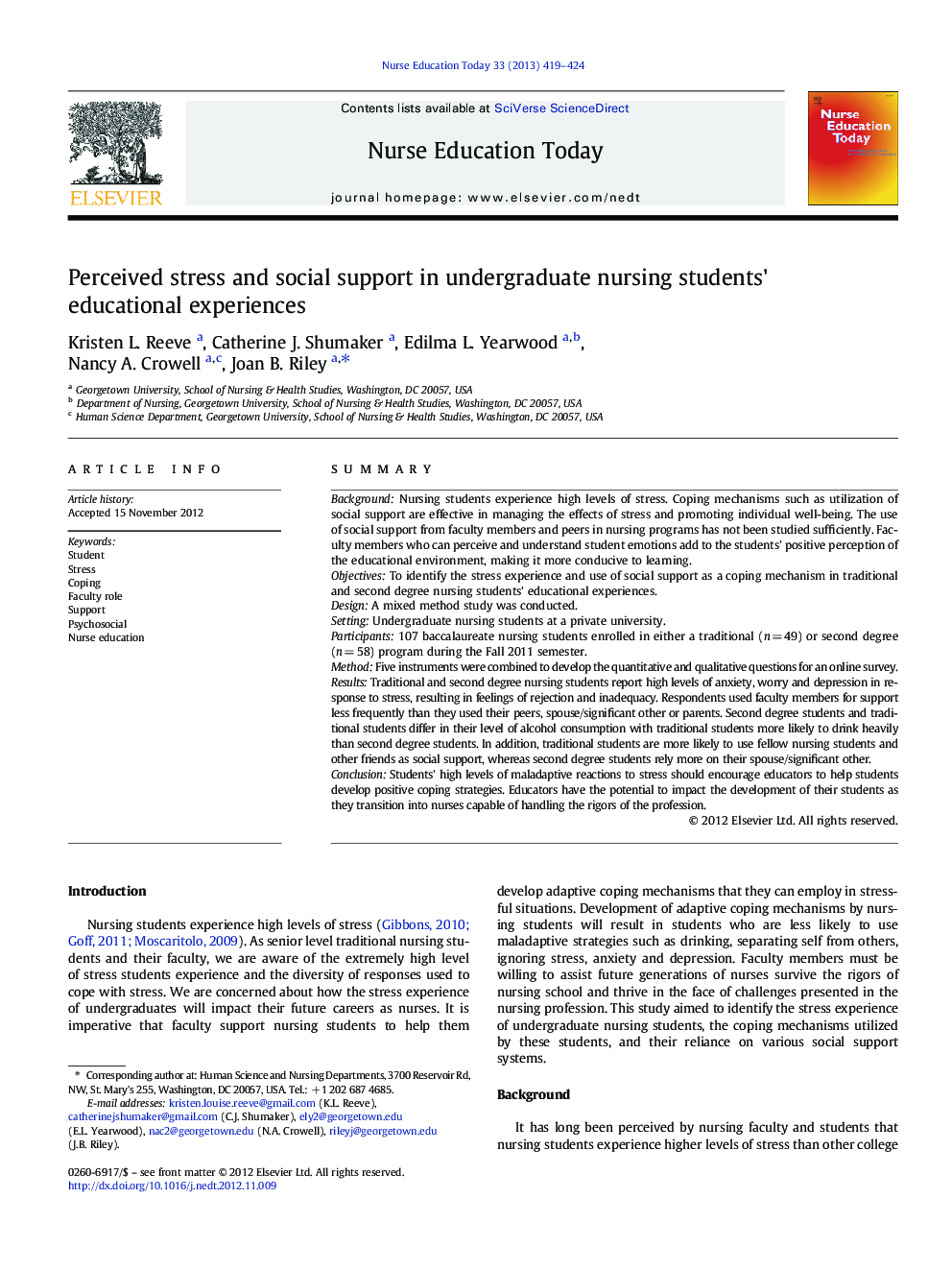| Article ID | Journal | Published Year | Pages | File Type |
|---|---|---|---|---|
| 368543 | Nurse Education Today | 2013 | 6 Pages |
SummaryBackgroundNursing students experience high levels of stress. Coping mechanisms such as utilization of social support are effective in managing the effects of stress and promoting individual well-being. The use of social support from faculty members and peers in nursing programs has not been studied sufficiently. Faculty members who can perceive and understand student emotions add to the students' positive perception of the educational environment, making it more conducive to learning.ObjectivesTo identify the stress experience and use of social support as a coping mechanism in traditional and second degree nursing students' educational experiences.DesignA mixed method study was conducted.SettingUndergraduate nursing students at a private university.Participants107 baccalaureate nursing students enrolled in either a traditional (n = 49) or second degree (n = 58) program during the Fall 2011 semester.MethodFive instruments were combined to develop the quantitative and qualitative questions for an online survey.ResultsTraditional and second degree nursing students report high levels of anxiety, worry and depression in response to stress, resulting in feelings of rejection and inadequacy. Respondents used faculty members for support less frequently than they used their peers, spouse/significant other or parents. Second degree students and traditional students differ in their level of alcohol consumption with traditional students more likely to drink heavily than second degree students. In addition, traditional students are more likely to use fellow nursing students and other friends as social support, whereas second degree students rely more on their spouse/significant other.ConclusionStudents' high levels of maladaptive reactions to stress should encourage educators to help students develop positive coping strategies. Educators have the potential to impact the development of their students as they transition into nurses capable of handling the rigors of the profession.
